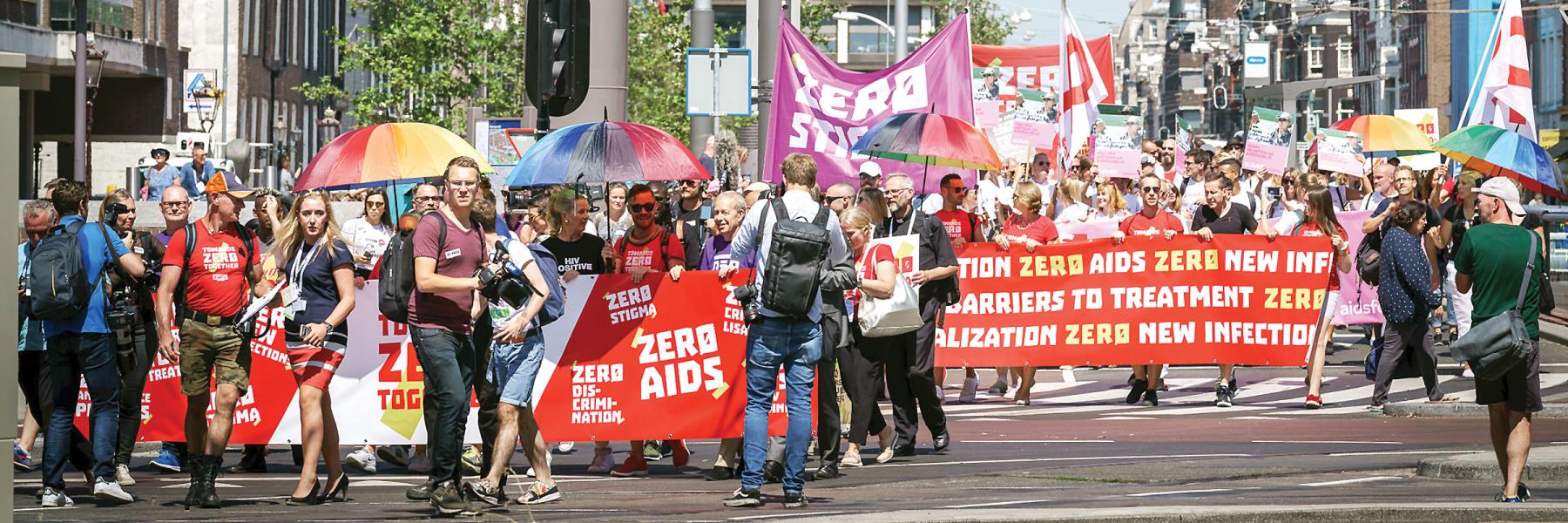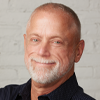
In a whirlwind week of workshops, demonstrations, presentations, and meetings, this year’s international AIDS conference in Amsterdam brought home the fact that while we have made incredible progress and much has changed since the conference was first held here in 1992, including the recent approval of PrEP by the Dutch government, incredible challenges remain—since 2010 HIV infections have increased by 30% in Eastern Europe, largely due to intravenous drug use.
There was a touching moment in the opening session when Dr. Joep Lange, his partner Jacqueline van Tongeren, and four others who were headed to the 2014 conference were remembered and honored. They were all aboard Malaysian Airlines flight 17 on that fateful day in 2014 when it was shot down and 298 lives were lost. The conference co-chair Peter Reiss became choked up as he was talking about his friends who were murdered on the flight, and I and thousands of others were in tears as well. It was because of a conversation with Joep before he was killed that they decided to bring the conference back to Amsterdam after 26 years.
Go to the online program at AIDS2018.org for webcasts, slides, and rapporteur summaries of the conference. Videos are also available on the IAS YouTube channel at youtube.com/iasaidsconference.
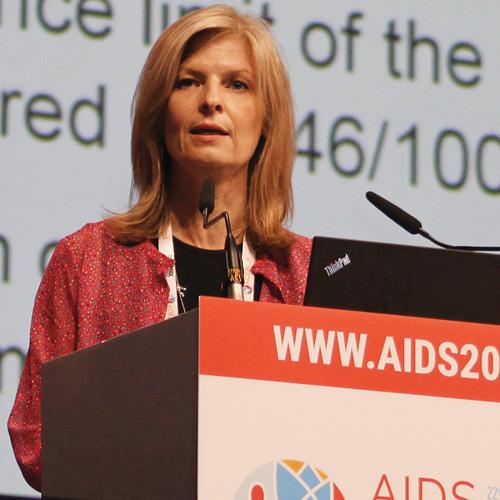
Rodger discusses PARTNER 2 study results.
One of the most notable things for me about this conference was the prominence of U=U (undetectable equals untransmittable), with an all-day pre-conference workshop, several sessions, and endorsements from numerous speakers, including Dr. Tony Fauci of NIAID, Alison Rodger during her presentation of the landmark PARTNERS 2 study results showing zero new infections of the partners of gay men on effective treatment, and Pietro Vernazza, co-author of the Swiss Statement which laid the groundwork for Prevention Access Campaign’s empowering message that people who are on effective HIV therapy do not transmit the virus.
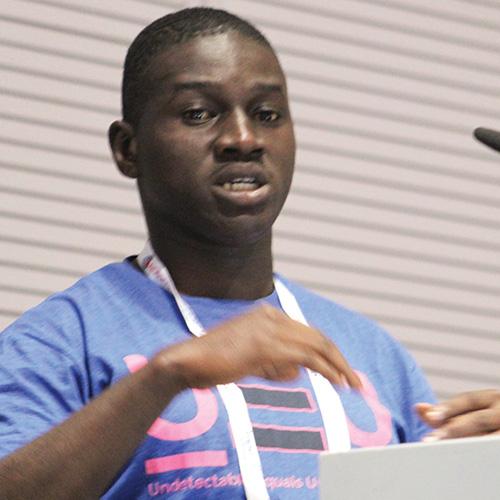
Matovu, of Uganda’s Love to Love organization.
During the workshop William Matovu of Uganda’s Love to Love, a partner of the campaign, spoke about the factors that hinder spreading the message of U=U in Uganda, including HIV colonialism, ignorance, and the lack of financial support for and the negligence of people living with HIV. Matovu, who was shunned by his family after testing HIV positive as a young boy, now advocates for the rights of orphans and other vulnerable youth by creating opportunities for them in their own communities.
Innovative campaigns from around the globe were highlighted throughout the day, including those from Russia, Belize, Australia, and the U.K., just to name a few. Dr. Alex Schneider is a German-Russian activist living with HIV and co-creator of a mobile app designed to help improve adherence called Life4me+ (available on Google Play or the App Store). He pointed out that U=U is about “getting people to start to think about the science, and not the fear.”
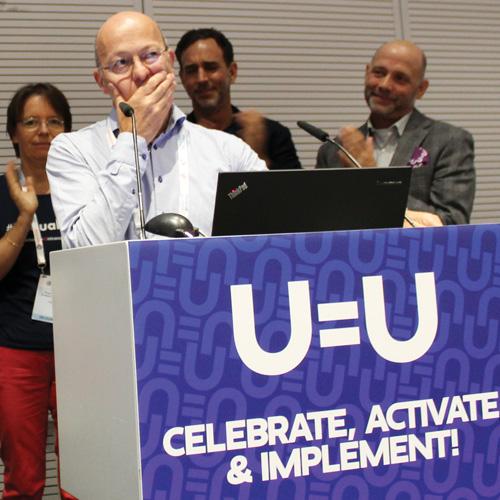
Pietro Vernazza was presented with an award for his early groundbreaking work on the Swiss Statement, and was visibly moved by the standing ovation given by those in the room. “I’m shocked at what is going on here, but it’s always been about emotions,” said Vernazza, fighting back tears.
Nic Holas, co-founder of The Institute of Many in Melbourne, Australia, ended his presentation with a rousing call to action and admonition of those in power who are controlling the message. “It’s vital that campaigns like U=U keep centering the voices of PLHIV and ensure we are not erased, as dynamic new prevention technologies that reach HIV-negative people are increasingly rolled out as the silvery-blue bullet many in the global HIV response have been seeking…
“Whatever you call it: U=U, UVL, TasP, call it loud and proud. It is not enough to end the HIV epidemic with PrEP and leave us isolated, criminalized, and stigmatized. No longer can we accept gatekeeping from CEOs and board chairs of PLHIV and AIDS organizations. No longer can we allow this life-changing, life-saving information to be withheld from us.
“Zero risk equals zero excuses. If you are part of an organization that is sitting on this information, you are killing us.”
The HIV Cure Community pre-conference workshop took place on Saturday, two days before the official conference opening. See Karine Dubé’s blog here for more about the workshop. One of the highlights for me was getting to hear Clark Hawley, who was featured in the POSITIVELY AWARE Summer 2018 issue on HIV cure, tell his story about how he came to participate in a cure study.
In an interview of Hawley by Dr. Steven Deeks of USCF, who heads up the cure study he is in, Hawley spoke of how after coming out later in life and having gone through a “slut” period, he decided to go on PrEP because he was ready for love. Hawley is thought to be the earliest adult who initiated treatment after being exposed to HIV (probably around 10 days; he was only on PrEP for four days and was immediately put on ART). He now takes two pills a day instead of one, he says. “When you get covered in the magazine as one of the poster boys for HIV, this was not one of the things I aspired to be.”
Says Hawley, “If people knew how much the researchers care for study participants, they would be much less fearful [about participating in a cure study].”
In the Wednesday morning plenary session, R. Brad Jones, PhD, of The George Washington University, gave an eloquent overview of HIV cure research, one of the most understandable and entertaining presentations on the topic that I’ve ever seen. In his talk Jones used the analogy of the story of the little Dutch boy, who spots a leak in the dam and saves his town by plugging it with his finger until help can arrive, to categorize the different cure strategies currently being pursued, either by draining the reservoir (sterilizing cure) or by “reinforcing the dam” (boosting the immune response to HIV, also known as a functional cure).
Jones concluded with an empowering analogy of how past epidemics can sow the seeds for future cures. The Delta 32 mutation that makes cells resistant to HIV, and contributed to the one known cure to date (that of Timothy Ray Brown), came from a past epidemic such as the plague or smallpox, we don’t know for sure, said Jones. “But we should also know that the seeds of discovery that we generate in the process [of discovering a cure] will drift into the future and will have positive benefits on human health long after the HIV epidemic is over. That will be the enduring legacy of the special community that we’ve built—and it will emerge from the altruism of people living with HIV, including those who continue to participate in research after they themselves are healthy. People like [Timothy Ray Brown] and so many of you whom I’ve had the honor to speak to today.”
Be sure to check out the entire presentation at aids2018.org.
Long-term survivors
“Survivor Conflict” was the preferred term used to describe what’s often referred to as “survivor’s guilt” by a group of women in the U.K., many of who are long-term survivors of HIV. In a poster by University of Greenwich’s Jacqui Stevenson and colleagues, 14 women aged over 50 participated in a life story interview. Participants were recruited to reflect the diversity of women living with HIV in the UK, and included:
Five white British women, one white other, one black British woman, and seven black African women. Twelve were aged 50–60, and two aged 60–70. Two bisexual women and one trans woman participated. One woman was diagnosed less than 5 years, three for 6–10 years, one for 11–15 years, two for 16–20 years, two for 21–25 years and five for 26–30 years.
Some of the comments from participants included,
“Maybe we need something new to define this experience of loss of self, loss of future, loss of identity, loss of...”
“I survived something that I wasn’t supposed to and I did..., I don’t have a problem with the term survivor, but I don’t identify with the word guilt, I don’t feel guilt.“
“…coin that one, survivor conflict”
“I think that’s a more, much better descriptive term than the guilt one, because you’re right, you do go between…”
“You go between positive and negative feelings, a sense of confusion, a sense of, it’s very difficult to make sense of it, or to have a rational, logical, completely like, being very happy about it. I am grateful, on a good day.”
Stevenson told POSITIVELY AWARE that women with HIV often feel excluded because they are not a “community” affected by HIV (such as gay men), so they have to seek out their community.
The study authors concluded that, “Women diagnosed before effective treatment became accessible have unique needs and experiences that are not adequately understood or addressed. Living with HIV is an ongoing, evolving experience that brings challenges that can be hard to reconcile with simple constructs of ‘survival.’
“Surviving a terminal diagnosis is an emotional and psychological challenge that for many women is complicated by feelings of gratitude, loss, and fear for the future. Surviving is just the beginning. Living, for decades, with HIV is negotiated with each new milestone reached and the internal and external meaning of HIV changes with time and age. Beyond this is the prospect of ordinary, mundane mortality, and the challenge of reconciling to ‘normal’ types of dying.”
HIV criminalization
The Beyond Blame: HIV Justice Network pre-conference workshop was kicked off by a moving statement from Laela and Naomi Wilding of the Elizabeth Taylor AIDS Foundation about their involvement with HIV decriminalization. Edwin Bernard, Global Coordinator of the HIV Justice Network, led a panel of activists and people who were unjustly incarcerated under HIV criminalization statutes, and highlighted the work that is being done around the globe and some of the success stories in getting statutes changed or removed altogether.
Deon Haywood of Women With A Vision (WWAV) in New Orleans spoke about the horrific laws in place in Louisiana that targeted sex workers, with the end result being that 97% of people on the sex offender registry were black women. “If we are going to change anything, we are going to have to change who runs what,” said Haywood. “Sometimes as activists we feel we have to fight for people, but we have to fight for getting them the tools to fight for themselves.”
Edwin Cameron, a judge on the Constitutional Court of South Africa and a gay man living with HIV said, “every single person with HIV lives under the terror of irrationality that derives from stigma.”
To view all of the sessions from the day’s proceedings go to tiny.cc/hivjustice.
HIV activism
In a fascinating activism session, Robin Gorna of SheDecides in the U.K. stated that the 1992 conference was held in Amsterdam in light of the horrible human rights issues in the U.S., and here we are 26 years later in Amsterdam facing horrible human rights issues again. Eric Sawyer, one of the founders of ACT UP, talked about how the PWA lounges started at the 1992 conference because people were getting on planes with herpes lesions all over their face, thrush in their mouth, KS all over their body, or PCP, and activists went to Jonathan Mann of IAS and demanded a space where they could rest and get food. Kate Thomson of the Global Fund to Fight AIDS, Tuberculosis and Malaria in Switzerland spoke about how there were, and continue to be, other, quieter forms of activism going on at the same time that haven’t yet been written about. Activist William Nutland of PrEPster in the U.K. said that in one sense everything has changed, and in another nothing has changed. “We’ve made great advances in treatment, a pill for prevention, U=U, so we should be dancing in the streets. But looking back, we should be holding our heads in shame at some of the horrible inequities that were happening.”
“I make a call to IAS,” said Nutland. “Do not go back to Trump’s America in 2020!”
#AIDS2020ForAll
An alliance of members of United States networks of people living with HIV are calling upon the International AIDS Society to immediately announce their decision to relocate AIDS 2020 outside the U.S. due to the human rights violations of the Trump administration making it unsafe and unethical to hold the conference here in San Francisco and Oakland in 2020.
Activists, advocates, and allies appeared at AIDS 2018 during a conference main floor banner drop and a people’s press conference. Hundreds of individuals and organizations have signed on to No AIDS 2020 in Trump’s USA.
For more information about the grassroots movement to move the conference out of the U.S. in 2020, go to hivpowershift.wordpress.com.
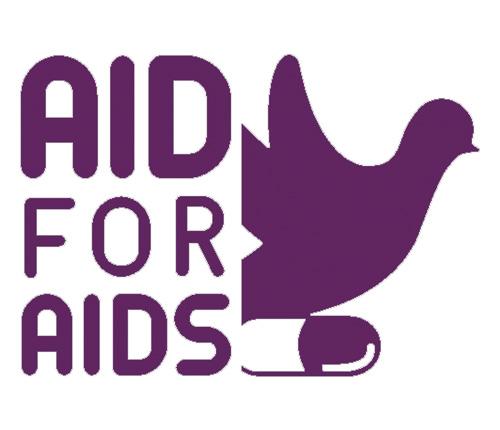
AID for AIDS
Jesus Aguais of AID For AIDS (AFA) told the U=U audience that his organization has taken $140,000,000 out of the trash. AFA’s HIV Medicine Recycling Program recovers unused, unexpired life-saving medication that otherwise would have been wasted and then re-distributes it to those without access in developing countries through the AIDS Treatment Access Program.
Under the current regime in Venezuela people with HIV are dying needlessly. Eighty thousand people in Venezuela need medications; 10,000 have fled to other countries to access treatment. How can you help? If everyone living with HIV in the U.S. would donate their unused medications, says Aguais, thousands of lives would be saved. To donate, go to aidforaids.org.


